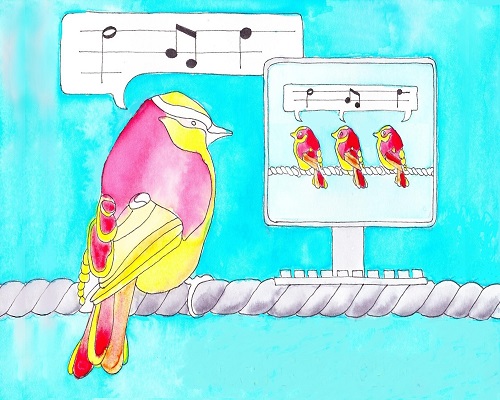Create Consistency.
I am attracted to people who are similar to me. I am even more attracted to people who are at peace with themselves and act in a way that is consistent and predictable. Research shows I am not alone. The book “Wired for Speech” by Clifford Nass and Scott Brave shows that humans are not only attracted to humans, but also to computers that have human traits they can relate to.
When we feel a computer has something in common with us, we enjoy interacting with it and we feel it is intelligent, competent and trustworthy. Educators who write online courses can use this information to design predictable and relatable classes which students will enjoy taking.
“Wired for Speech” summarizes research findings related to how humans respond to voices and words we hear and read on a computer. They discovered that written words on a page are so powerful we attach a human personality to them. When we read words, we have a social interaction with them just as strong as any conversation we have with a real person. When the personality of a written text does not match our personality, we do not enjoy reading it.
People also react socially to audio they hear online, especially to human voices. Just as humans assign a personality and gender to written words, we also attribute human traits to voices and expect them to speak according to our instinctive social stereotypes.
This principle of being attracted to humans and computers that are similar to us in personality (extro-introverted) also applies to gender (male-female), race (regional origin) and emotion (happy-sad, calm-excited).
We know, for example, that males prefer web sites with content that is stereotypically male, while females prefer stereotypically female sites. Guys spend more time on sport sites, while girls spend more time on clothing sites. This bias of preferring to spend time with people and computer interfaces that are similar to us is called “similarity attraction”.
As online educators, we must be aware that students react socially to the written and audio content we include on our sites. This raises a question for us as we develop our courses. We need to know if students learn better when (1) the text and voice personalities of our course content match the personality of the student (2) or when the personality of the course text simply matches the personality of the voice on the site. Research shows that if the computer does not know the social traits of the user, it should be consistent within itself.
For example, a web site that sells nail polish does not know whether the person who visits the site is a man or woman. Research shows that because nail polish is stereotypically a female product, the voice of the web site should be a female. Both men and women users feel more comfortable using a site that uses a female voice to represent a female product. The same is true for male products. Women prefer to hear a male voice on a car web site.
This bias of preferring to spend time with people and computer interfaces that are internally consistent is called “consistency attraction”. Humans feel uncomfortable when we experience inconsistent behavior in other people. We feel that computers with inconsistent voice and text are less intelligent, competent or trustworthy.
The gender of our students is one stereotype to consider when designing our courses. We must also consider personality differences among our students. For example, an extroverted student will prefer reading about extroverted topics written in an extroverted style and read by an extroverted voice. The regional origin of the user also matters.
Students prefer reading course content which include words from their own dialect and hear a voice using their regional accent. The emotional state of the student also makes a difference as they take our courses. If the student is in a good mood, they will prefer happy topics read with a happy voice.
Conclusion: It is important to match the social traits of our course content with the social traits of students. The ideal online course will detect the gender, personality, emotions and regional origin of the student and then adapt itself to match those characterstics. Most web sites cannot, however, detect and match themselves to important social traits of their users.
If a web site cannot make itself similar to the user, then site designers and educators should create consistent interfaces by matching the characteristics of the text with those of the voice. This principle of consistency applies not only to gender (male-female), but it also applies to personality (extro-introverted), race (regional origin) and emotion (happy-sad, calm-excited).
The default settings for text and voice traits of course content should be male (authoritative), extroverted (engaging), happy and mildly exciting (uplifting), with standard vocab and grammar (recognizable). We should write content full of upbeat adjectives and include few regional words. If we include a voice personality, it should be male with a standard accent.
Another option, however, is to create multiple versions of a course students can choose from. For example, an introverted male student could choose a course written with introverted text and read by an introverted male voice. An extroverted female could chose a version including extroverted text read to her by a female extroverted voice in any accent she desires.
Questions remain for educators creating online courses: What text and voice combinations should we choose to present our content to students? Does our course fit into a specific social stereotype? Is Chemistry a stereotypically male course? Is Creative Writing stereotypically introverted?
Should we seek to make students comfortable while taking our online courses by reinforcing their stereotype expectations of the content? Should we seek to break up stereotypes, or should we create multiple versions of courses and let students decide for themselves which computer personality they want to learn from?
